We all know plants and nature have many different uses, both in health and healing. However, did you know that certain types of plants can actually purify the air in your home? NASA did a study back in 1989 that still holds up very well today.
The study was conducted by B. C. Wolverton Ph.D., Anne Johnson M.S., and Keith Bounds M.S. at the Stennis Space Center in Mississippi. Wolverton and his team set out to discover various plant species that would reduce pollutants in the air during space travel. Obviously being stuck in a completely sealed room is different than your own home, however if you spend a lot of time at home or in your office, these plants may be a great idea to help keep your air at its highest natural quality.
The chemicals focused on in the experiment were Benzene, Trichloroethylene, and Formaldehyde.
 Benzene can be found in gasoline, furniture wax, glue, detergents, paints, and pesticides. According to the Center for Disease Control’s website, this dangerous pollutant is capable of causing health problems ranging from head aches, dizziness, and rapid/irregular heart beat, to unconsciousness, or even death. The CDC continues to say long term exposure may cause low red blood cells, harmful effects to your bone marrow, irregular menstrual cycles, and even cancer.
Benzene can be found in gasoline, furniture wax, glue, detergents, paints, and pesticides. According to the Center for Disease Control’s website, this dangerous pollutant is capable of causing health problems ranging from head aches, dizziness, and rapid/irregular heart beat, to unconsciousness, or even death. The CDC continues to say long term exposure may cause low red blood cells, harmful effects to your bone marrow, irregular menstrual cycles, and even cancer.
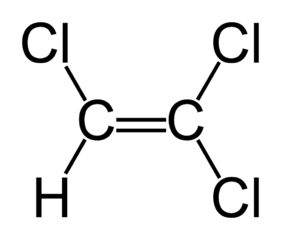 Trichloroethylene is mostly found in solvents to remove grease from metal parts and as a chemical that is used to make other chemicals, especially the refrigerant, HFC-134a. Most commonly causing air pollution in textile and dry cleaning facilities. The biggest risk contamination to normal households is through their water supply. The CDC’s website indicates the exposure health risks include headaches, dizziness, and sleepiness; large amounts of trichloroethylene may cause coma and even death.
Trichloroethylene is mostly found in solvents to remove grease from metal parts and as a chemical that is used to make other chemicals, especially the refrigerant, HFC-134a. Most commonly causing air pollution in textile and dry cleaning facilities. The biggest risk contamination to normal households is through their water supply. The CDC’s website indicates the exposure health risks include headaches, dizziness, and sleepiness; large amounts of trichloroethylene may cause coma and even death.
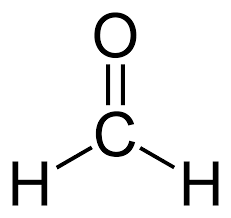 Formaldehyde is found in household products such as glues, paints, caulks, pesticides, cosmetics, and detergents. Here is a list of specific products containing Formaldehyde. The CDC states that formaldehyde can cause health affects from sore throat and nose bleeds, to cancer or death depending on exposure.
Formaldehyde is found in household products such as glues, paints, caulks, pesticides, cosmetics, and detergents. Here is a list of specific products containing Formaldehyde. The CDC states that formaldehyde can cause health affects from sore throat and nose bleeds, to cancer or death depending on exposure.
Other common household contaminates include volatile organic compounds, airborne biological pollutants, carbon monoxide and nitrogen oxides, pesticides and disinfectants (phenols), and radon.
These air borne pollutants should have no place in your home, so it is important to take precautions to reduce your families exposure to these chemicals. Make sure to be conscious of the cleaning and paint products you use in your home. This document has excellent home cleaner recipes, which are non toxic and safe for your family and pets.
According to the NASA study here are some of the best plants to have in your home to reduce air borne contaminates and improve overall air quality.
Gerbera daisy(Gerbera Jamesonii)
 This beautiful plant has bright orange, yellow, and pink flowers making it an excellent plant to decorate your home. It does require a lot of sunlight so try to place it in a window sill or somewhere that gets good sun. This species topped NASA’s research list for cleansing the air of Benzene and Trichloroethylene.
This beautiful plant has bright orange, yellow, and pink flowers making it an excellent plant to decorate your home. It does require a lot of sunlight so try to place it in a window sill or somewhere that gets good sun. This species topped NASA’s research list for cleansing the air of Benzene and Trichloroethylene.
Peace lily (Spathiphyllum “Mauna Loa”)
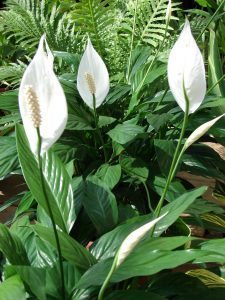 The Peace Lily is a compact plant, only growing to about three feet tall. The lily is awesome for indoor use due to its low maintenance growing requirements. This plant does well in indirect sunlight and only needs to be watered every week or so as it grows best in dry soil. The Peace Lily made its way to NASA’s top ten in removing all three of the tested pollutants.
The Peace Lily is a compact plant, only growing to about three feet tall. The lily is awesome for indoor use due to its low maintenance growing requirements. This plant does well in indirect sunlight and only needs to be watered every week or so as it grows best in dry soil. The Peace Lily made its way to NASA’s top ten in removing all three of the tested pollutants.
Janet Craig (Dracaena Marginata)
 Janet Craig also known as the corn plant is fairly easy to care for, and a great addition to your household’s pollution defense. While this plant can get up to twenty feet tall in the jungle. It is a relatively small plant when grown indoors, usually only reaching between one and three feet. Low to medium light is all you will need to get this little guy going. The Janet Craig enjoys its soil being dried out about 3/4 of the pot before watering again. This plant is most effective at absorbing Trichloroethylene and Formaldehyde, but it still removes a fair amount of Benzine as well.
Janet Craig also known as the corn plant is fairly easy to care for, and a great addition to your household’s pollution defense. While this plant can get up to twenty feet tall in the jungle. It is a relatively small plant when grown indoors, usually only reaching between one and three feet. Low to medium light is all you will need to get this little guy going. The Janet Craig enjoys its soil being dried out about 3/4 of the pot before watering again. This plant is most effective at absorbing Trichloroethylene and Formaldehyde, but it still removes a fair amount of Benzine as well.
Bamboo Palm (Chamaedorea seifritzii)
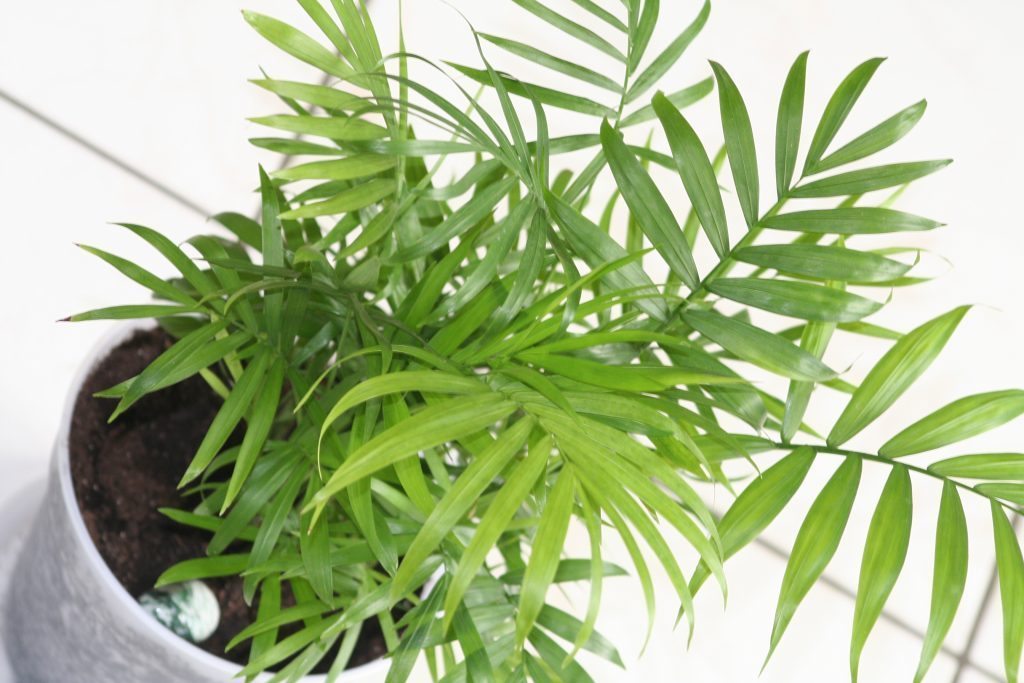 The Bamboo Palm is a beautiful plant to show off to your house guests. Much like the other air cleaning plants, it requires low to medium indirect sunlight, growing taller the more sun it is exposed to. Water this only when the soil is dry, being very careful not to over water the plant. Most effective in removing Formaldehyde, it can also get rid of a good amount of Benzene and Trichloroethylene from the air.
The Bamboo Palm is a beautiful plant to show off to your house guests. Much like the other air cleaning plants, it requires low to medium indirect sunlight, growing taller the more sun it is exposed to. Water this only when the soil is dry, being very careful not to over water the plant. Most effective in removing Formaldehyde, it can also get rid of a good amount of Benzene and Trichloroethylene from the air.
Pot Mum (Chrysanthemum Morifolium)
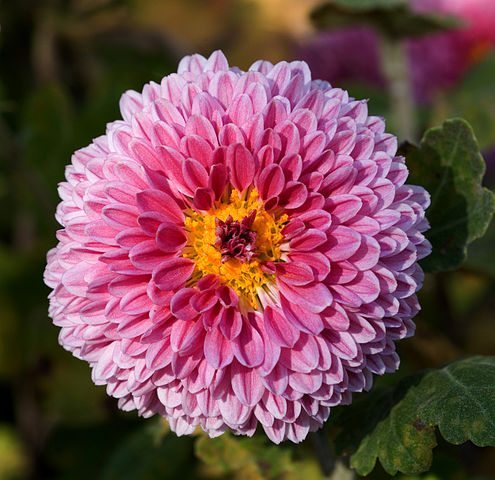 A very popular flower gift due to its beautiful flower colors ranging from yellow, orange, pink, purple, white, and red. Watch out for dry soil or wilted flowers, this plant needs a good level of moisture throughout its blooming season. The Mum grows between ten and twenty inches and requires bright sunlight. This plant species is most effective at removing Benzine from the air in your home.
A very popular flower gift due to its beautiful flower colors ranging from yellow, orange, pink, purple, white, and red. Watch out for dry soil or wilted flowers, this plant needs a good level of moisture throughout its blooming season. The Mum grows between ten and twenty inches and requires bright sunlight. This plant species is most effective at removing Benzine from the air in your home.
Marginata (Dracena Marginata)
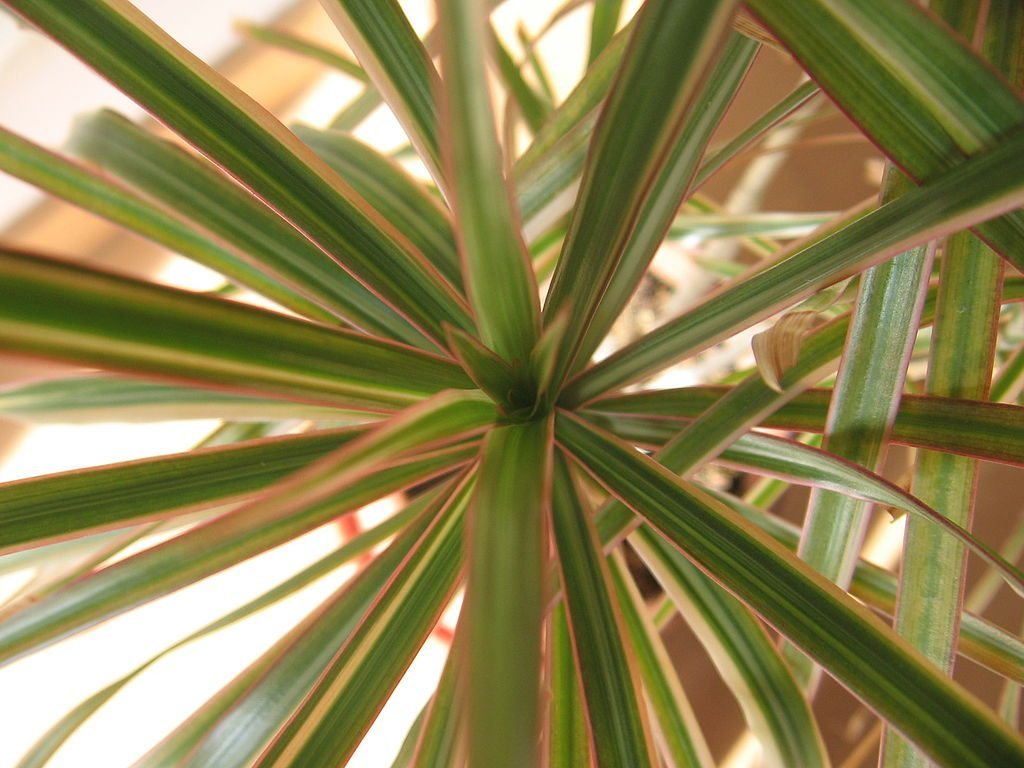
Also known as the dragon tree or rainbow plant due to its tricolor cultivation of yellow and cream stripes on narrow green leaves. If properly taken care of the dragon plant can grow up to eighteen inches per year, until it maxes out around ten or fifteen feet tall. Like many other pollutant removers this plant should never be over watered, which is the most common way to kill those types of plants. These trees enjoy moderate bright sun or constant indirect sunlight. Most effective in getting rid of Trichloroethylene from the air, but it also does well removing Benzine and Formaldehyde.
Warneckei (dracaena deremensis)
 This member of the agave family is a great addition to any household. The Warnekii grows best in medium or artificial light, it is important to keep it away from direct afternoon sunlight. You’re only going to have to water this plant every week or so, waiting until half of the pot’s soil is dry. This plant is most effective at ridding your home of Benzene but can also do well at reducing Trichloroethylene.
This member of the agave family is a great addition to any household. The Warnekii grows best in medium or artificial light, it is important to keep it away from direct afternoon sunlight. You’re only going to have to water this plant every week or so, waiting until half of the pot’s soil is dry. This plant is most effective at ridding your home of Benzene but can also do well at reducing Trichloroethylene.
Mother in Laws Tongue (Sansevieria Laurentii)
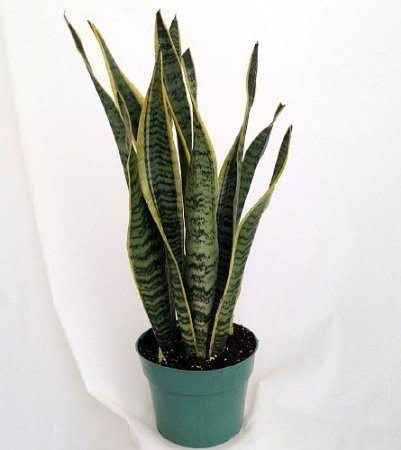 Get a snake plant here on Amazon!
Get a snake plant here on Amazon!
Also known as the snake plant for it’s long vertical green leaves, this is one of those plants you can forget about for a month without killing it. However to get a taller and more green plant, you should remember to regularly water it, without letting it sit in water. The snake plant doesn’t require much sun, but does well in medium light. It is recommended to keep it about three to six inches away from a window with good light. Most effective in removing Benzene and Formaldehyde, but can still remove some of the Trichloroethylene in the air.
Chinese Evergreen (Agloanema)
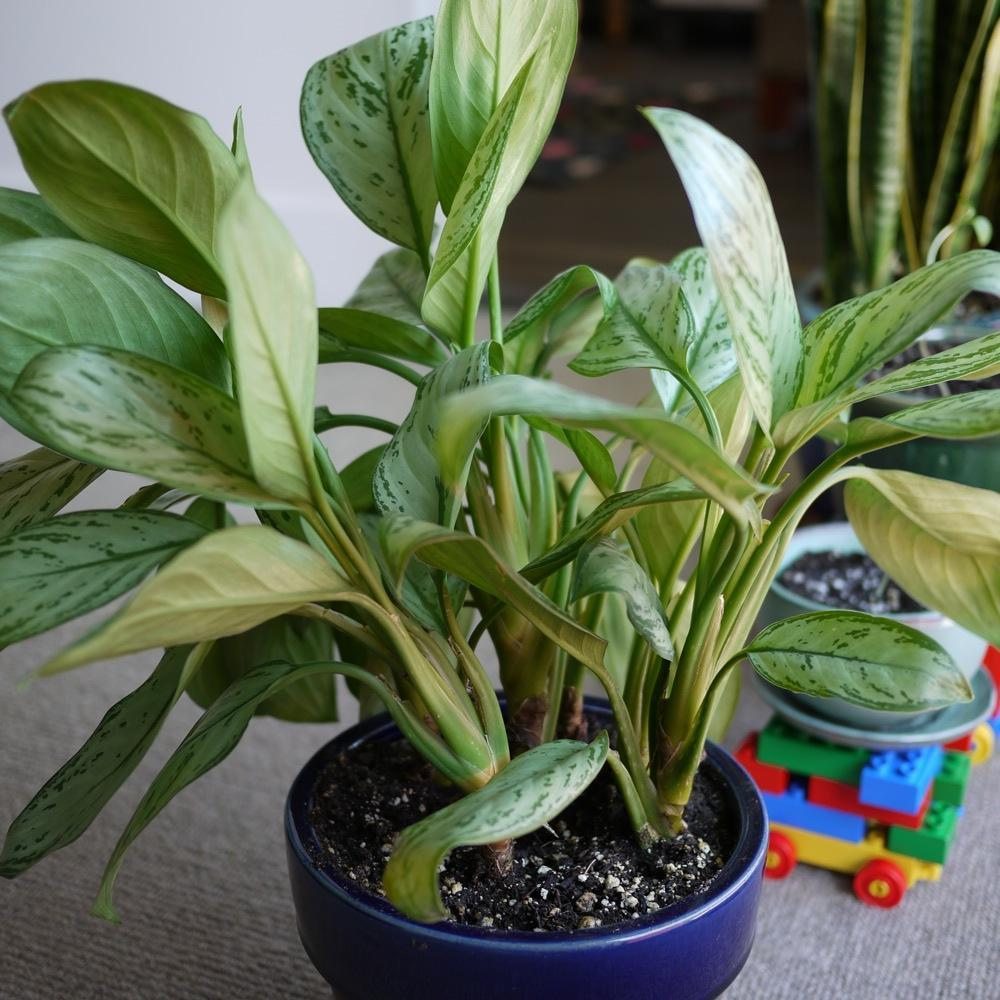 One of the most durable house plants you can find, making even novice gardeners look like pros. The evergreen requires low to medium sunlight, but can survive with less. It is important to wait until the soil is dry until you water the plant again. Older plants can produce flowers similar to the Peace Lilies. Most effective in eliminating Benzene but can also get rid of Formaldehyde from the air.
One of the most durable house plants you can find, making even novice gardeners look like pros. The evergreen requires low to medium sunlight, but can survive with less. It is important to wait until the soil is dry until you water the plant again. Older plants can produce flowers similar to the Peace Lilies. Most effective in eliminating Benzene but can also get rid of Formaldehyde from the air.
Mass Cane (Dracena Massangeana)
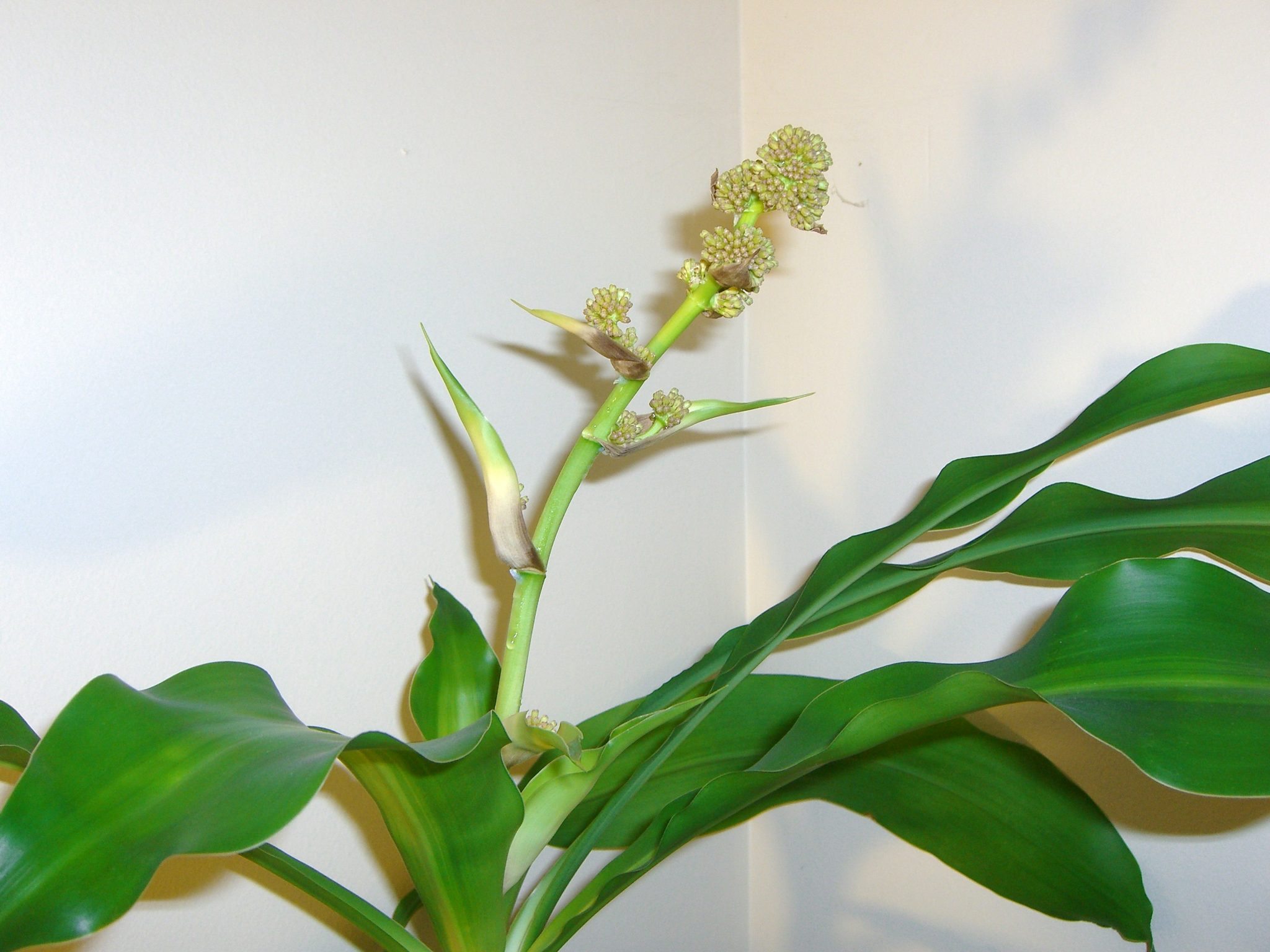 Mass Cane is one of the least expensive plants to clean your air. This slow growing plant can survive in most light situations, doing best in moderate sunlight or florescent light. Mass Cane needs to be watered every one to two weeks, or whenever the soil is dry to the touch. This species best removes Trichloroethylene from the air.
Mass Cane is one of the least expensive plants to clean your air. This slow growing plant can survive in most light situations, doing best in moderate sunlight or florescent light. Mass Cane needs to be watered every one to two weeks, or whenever the soil is dry to the touch. This species best removes Trichloroethylene from the air.
Check out this great guide by Kelli Gardener about the 12 best housplants to purify your indoor air.

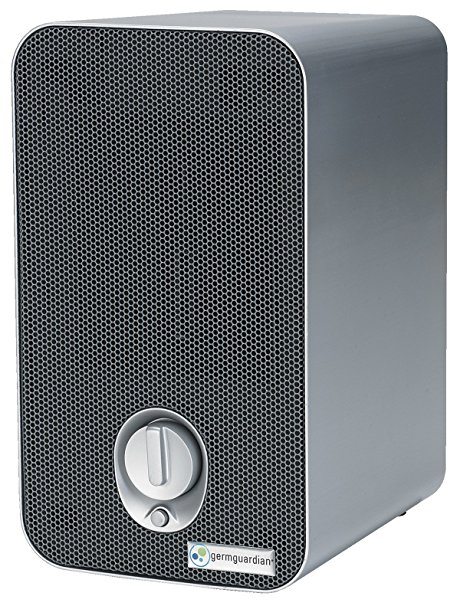 Get a GermGuardian AC4100 3-in-1 Air Cleaning System with HEPA Filter, UV-C Sanitizer, Allergen and Odor Reduction, 11-Inch Air Purifier here on Amazon!
Get a GermGuardian AC4100 3-in-1 Air Cleaning System with HEPA Filter, UV-C Sanitizer, Allergen and Odor Reduction, 11-Inch Air Purifier here on Amazon!

